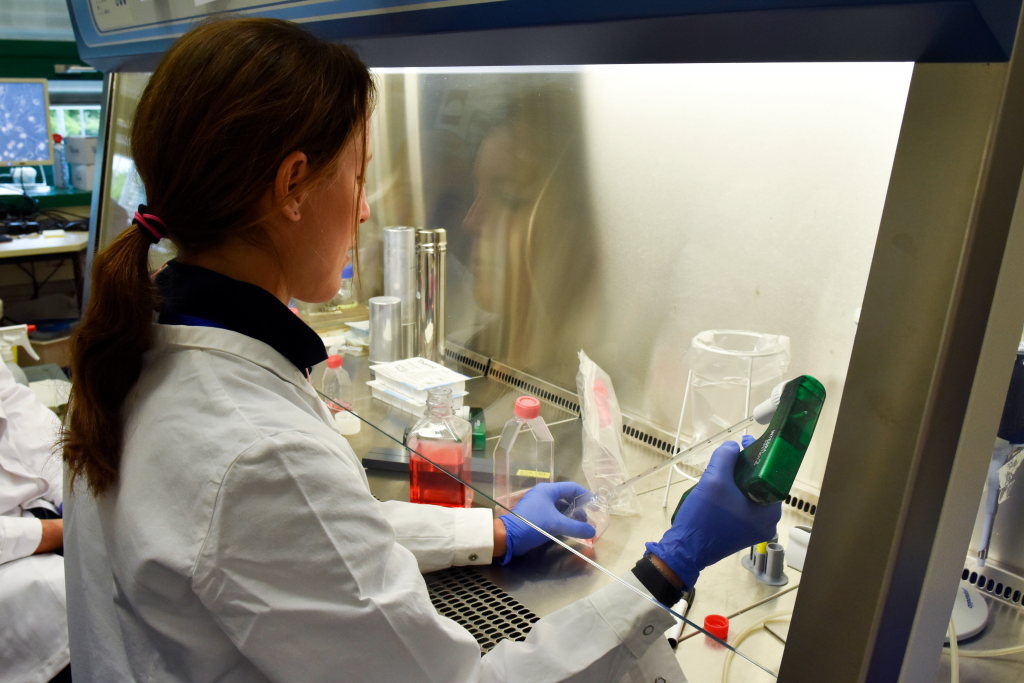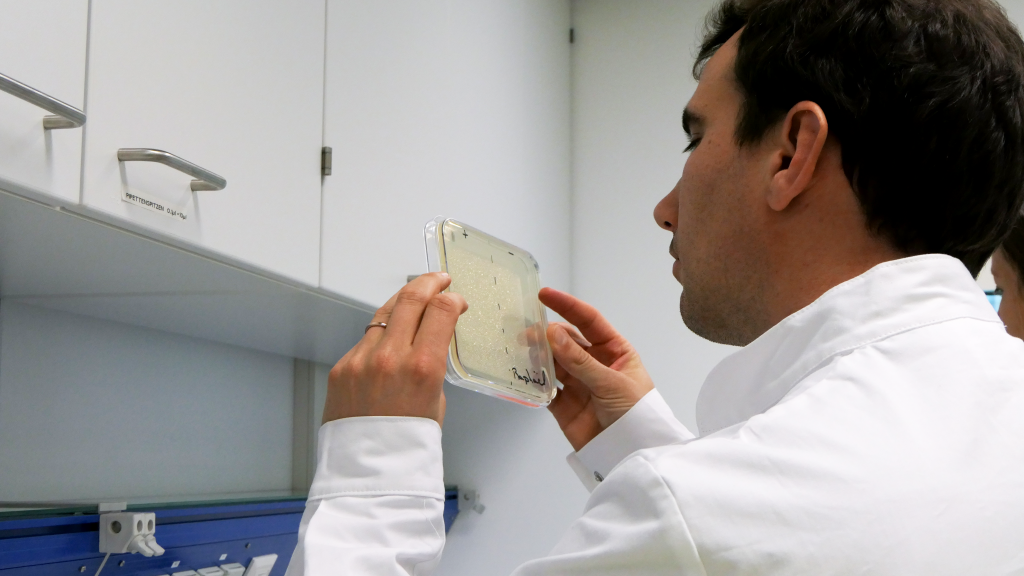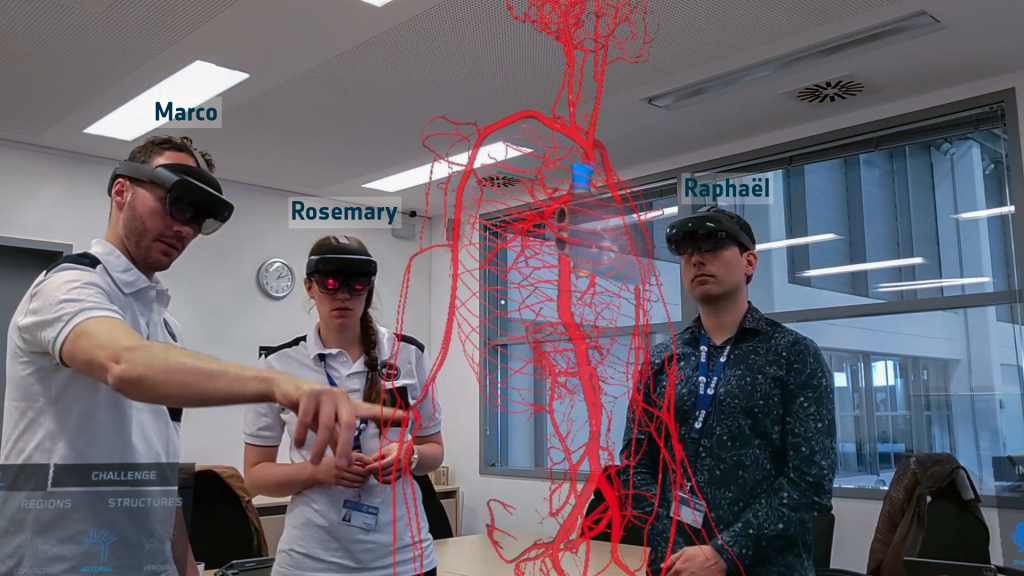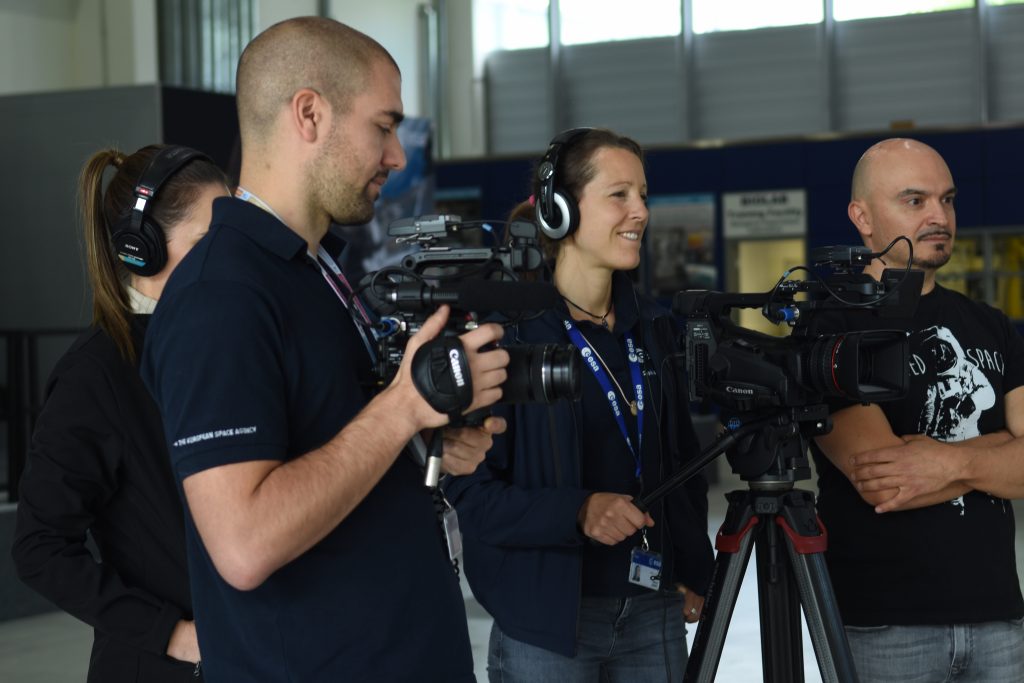Starting with science
ESA’s astronaut candidates began their basic training as aspiring space scientists, immersing themselves in fundamental biology and scientific laboratory techniques. This training provides them with a solid foundation in scientific lab work, preparing them for missions to the International Space Station. When they are assigned to specific missions, they will undergo specific training to operate experiments in space, including modules such as the Biolab or Fluidics on Europe’s space laboratory Columbus.
Benefitting from training sessions held at the German Aerospace Centre, DLR, flight clinic, the candidates were introduced to sterile techniques and gravitational biology, which studies the effects gravity has on living organisms.

ESA astronaut candidate Sophie Adenot practices sterile working techniques within a safety cabinet, employing a pipette to handle cell culture fluid with precision. Credits: ESA/DLR
This training included the C.R.O.P. system that explores sustainable plant cultivation in space using human waste to tackle the challenge of excess waste on Earth. Astrobiology classes expanded their knowledge further, as they learned to analyse microbial samples.

ESA astronaut candidate Raphaël Liégeois examining a microbial sample. Credits: ESA/DLR
They also delved into radiation physics and had a unique encounter with two special colleagues—Helga and Zohar, two ‘phantoms’ equipped with radiation detectors sent on a lunar flyby during the Artemis I mission. The candidates examined the radiation sensors placed in Helga an Zohar as part of the MARE experiment, and were taught about radiation and space travel.

ESA astronaut candidate Marco Sieber is removing a radiation sensor from Helga’s neck area. The sensor is then placed in an evaluation device and measured. Credits: ESA/DLR
Medical skills
As part of their basic astronaut training, the astronaut candidates received medical training to learn the basics of human anatomy and physiology. This ensures they understand the effects of spaceflight on humans.
This knowledge will help them understand and be better prepared to perform medical activities on board, such as tests and scientific experiments. This training also establishes a foundation for more advanced medical courses where astronauts will learn how to use medical equipment on the International Space Station and handle medical emergencies.

ESA astronaut candidate Rosemary Coogan practising blood draw on a dummy arm. Credits: ESA/DLR
In addition, the astronaut candidates received training with the Hololens, an augmented reality application that projects information in front of the user and serves as a guide during operational tasks. The Hololens will be used more for training and to guide advanced medical procedures on the Space Station.

ESA astronaut candidates Marco Sieber, Rosemary Coogan and Raphaël Liégeois trying the HoloLens for medical anatomy training. Credits: ESA
Diving deep
The astronaut candidates also complete scuba diving training in the Neutral Buoyancy Facility (NBF) at ESA’s European Astronaut Centre. Once certified, they are allowed to dive in scuba gear within the NBF, followed by surface supplied diving system training and certification, which will allow them to begin spacewalk training. Throughout their training, the candidates acquired skills for spacewalks, including tethering, using tools, communicating, and situational awareness.

ESA astronaut candidates Marco Sieber and Pablo Álvarez Fernández with diving instructors training at ESA’s European Astronaut Centre neutral buoyancy facility. Credits: ESA
Teamwork makes the dream work
Human behaviour and performance training enhances crew resource management, teamwork, conflict management, and leadership skills of the astronaut candidates. It equips them with the skills needed to work effectively as a team, handle conflicts, and demonstrate strong leadership in the demanding and isolated conditions of spaceflight.
Snapshots for space
Astronaut candidates also receive photo and media training before their missions to capture and communicate their spaceflight. This training equips them with photography skills to document experiments or capture breathtaking images of Earth during their journey and convey the significance of their mission to the public.

Pablo Álvarez Fernández and Sophie Adenot during photo training. Credits: ESA
From past to present
Astronaut candidates receive an encompassing overview of human spaceflight history, partner space agencies, as well as international space law and institutions to provide them with a comprehensive understanding of the complex landscape of space exploration, collaborating effectively with international partners, and upholding the legal and ethical standards of space activities.
The first three months of basic training have been an exciting journey for our astronauts-to-be, filled with new discoveries and personal growth. Stay tuned for the next training update!
Connect with us on social media! Twitter, Facebook and Instagram.



